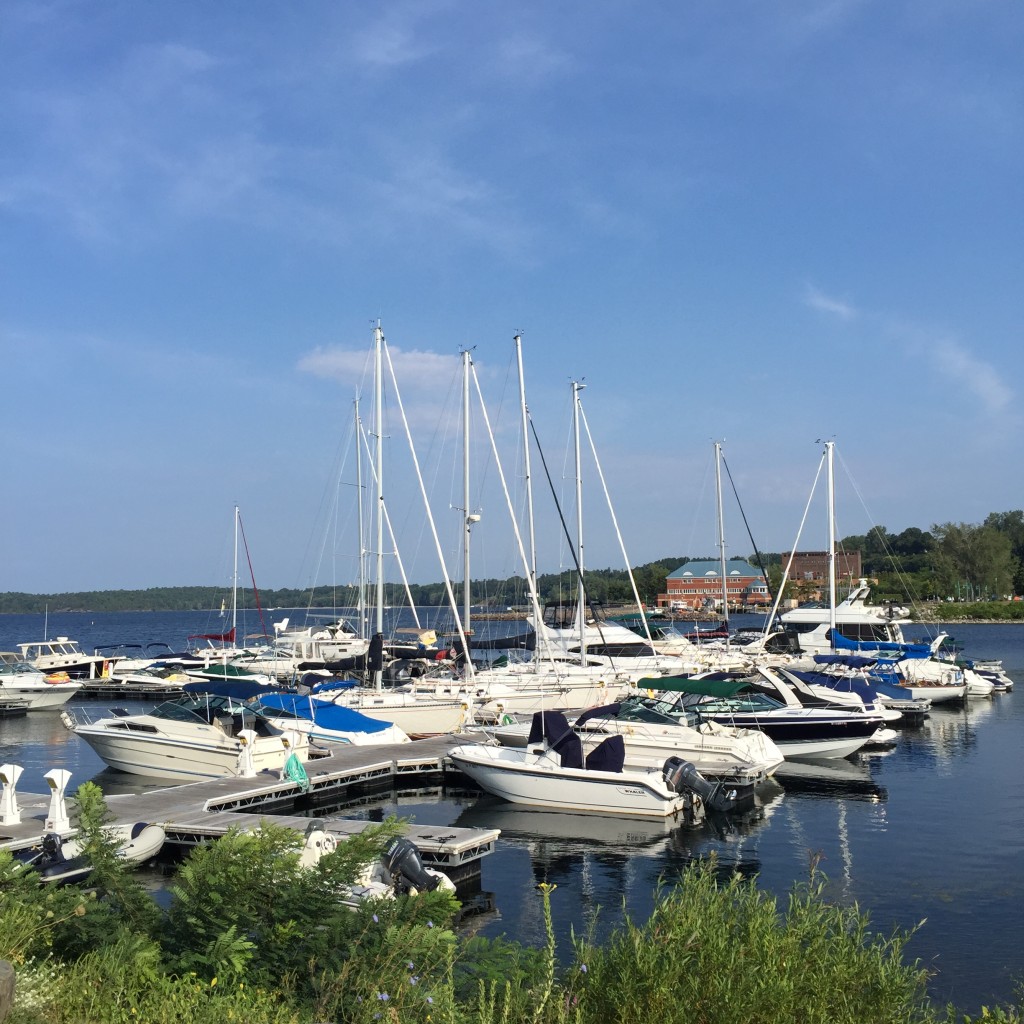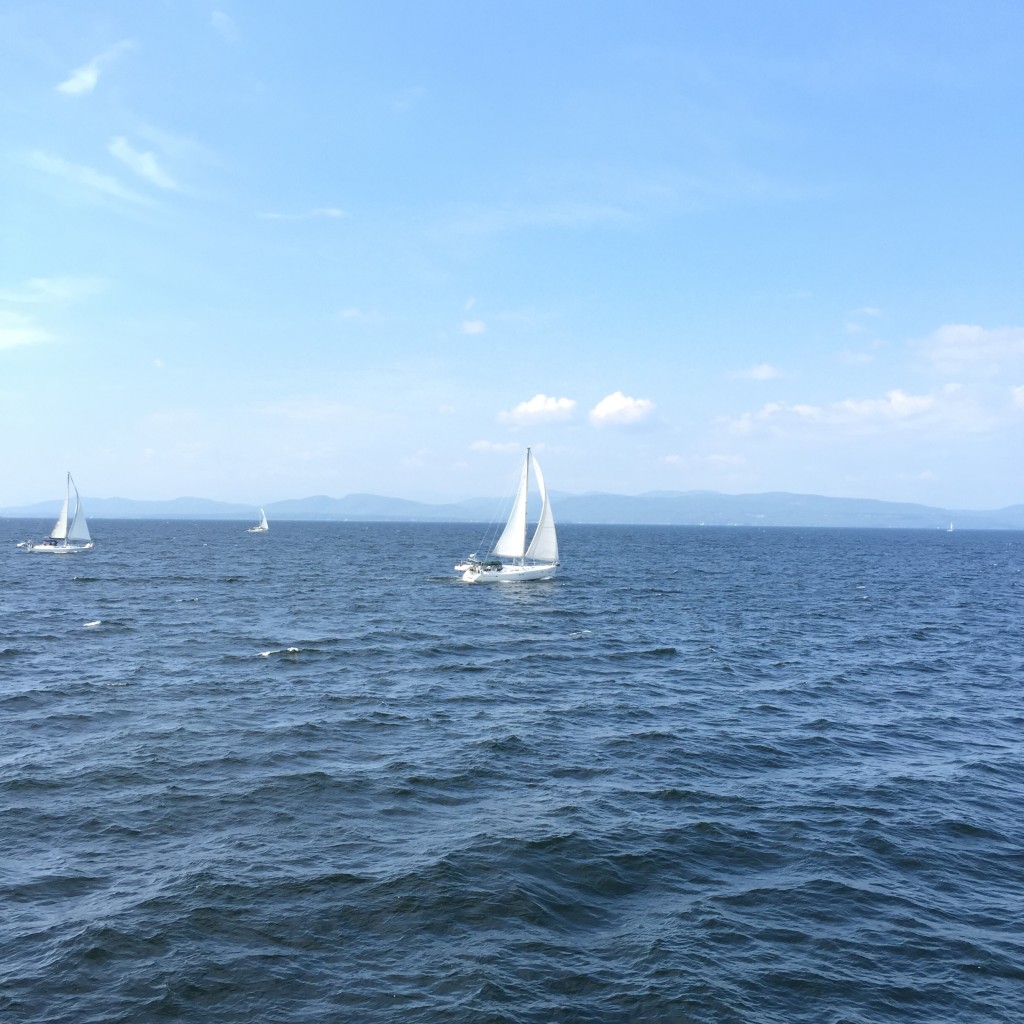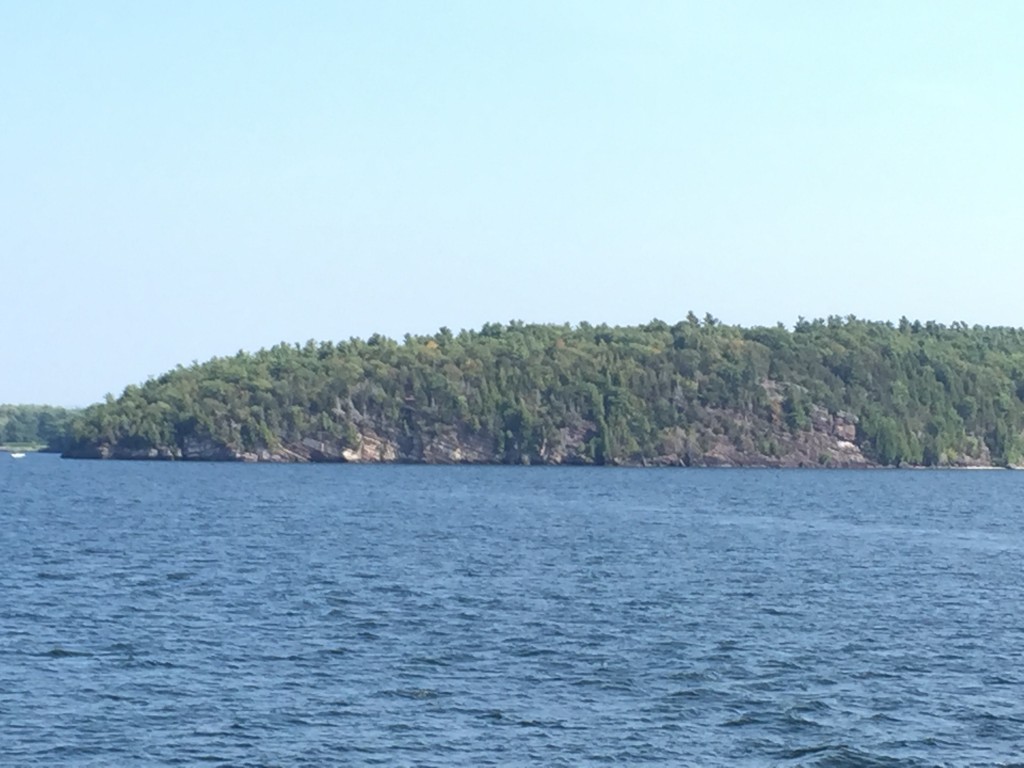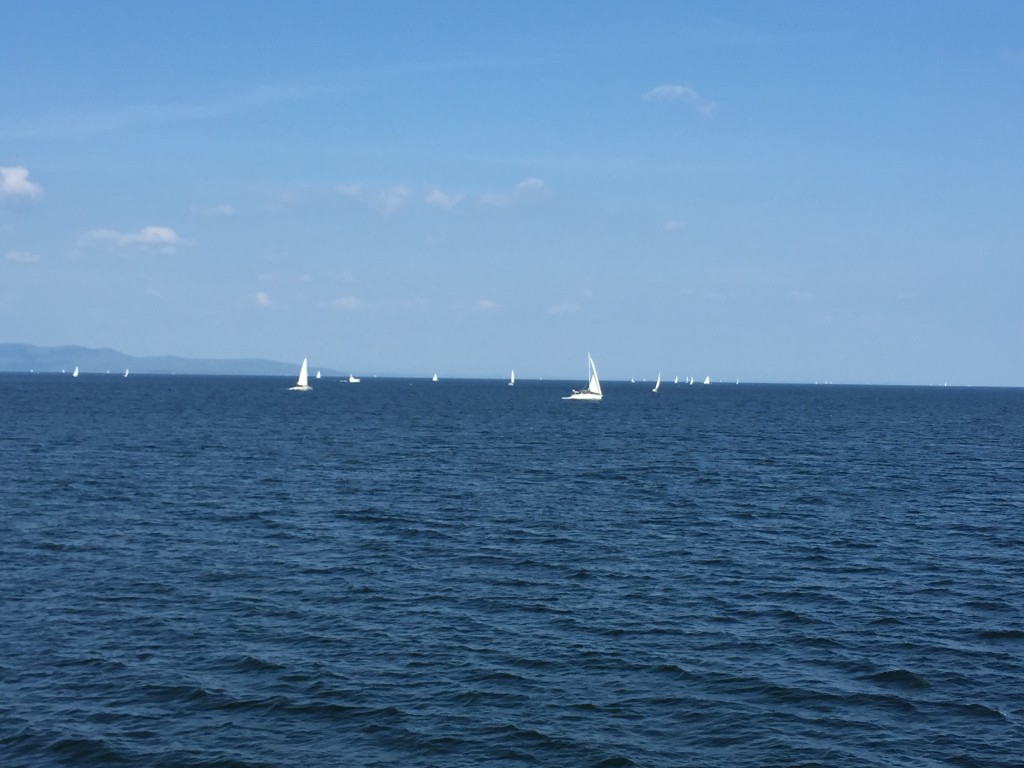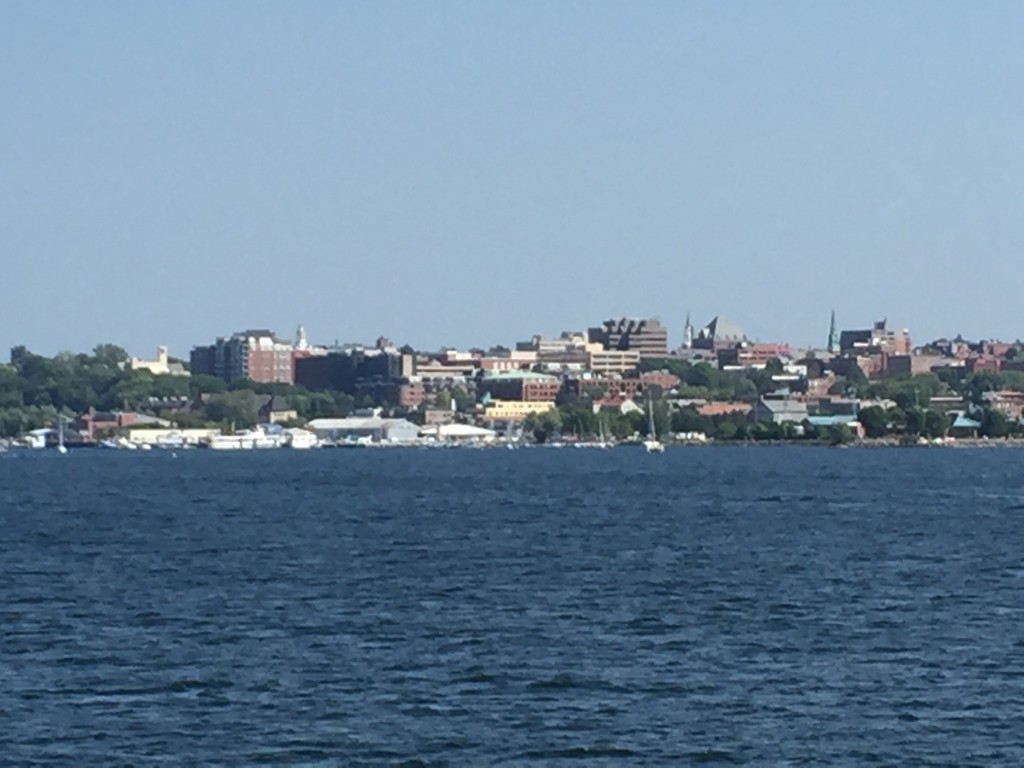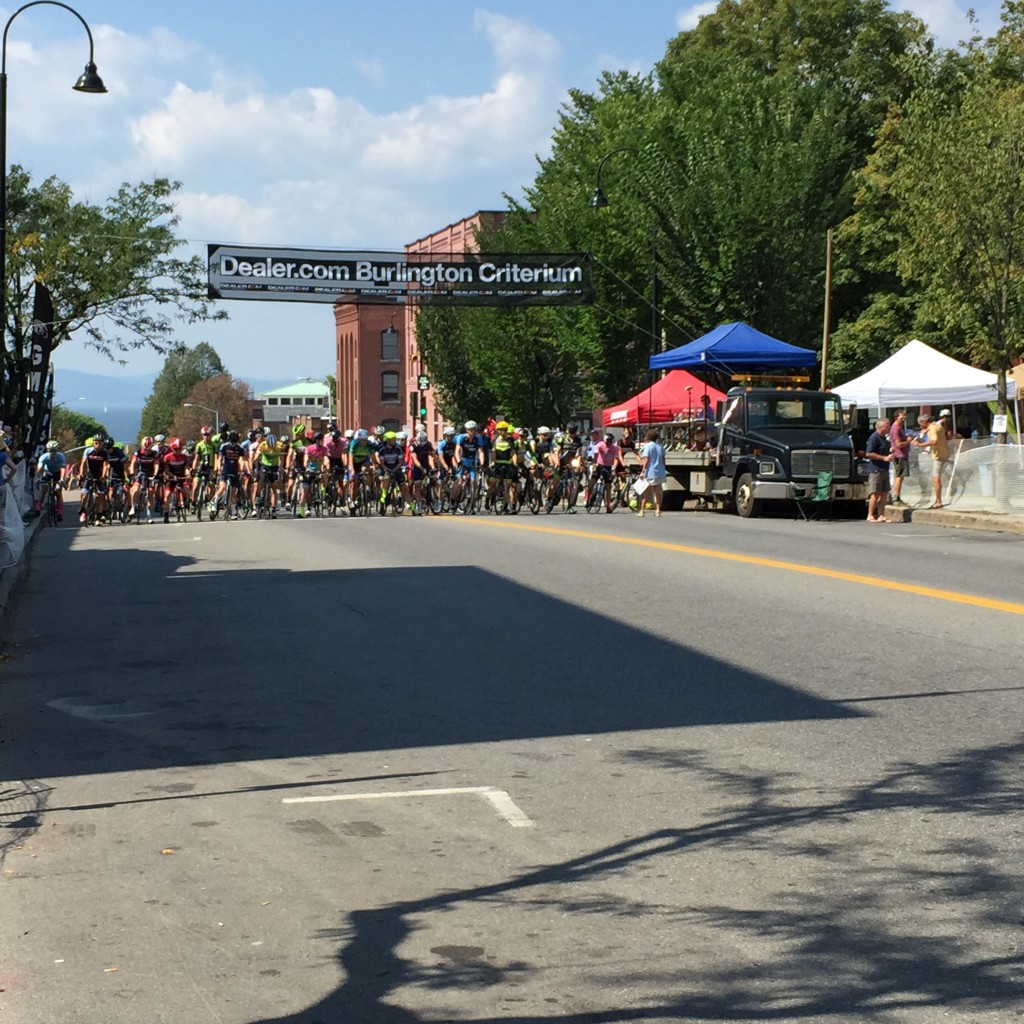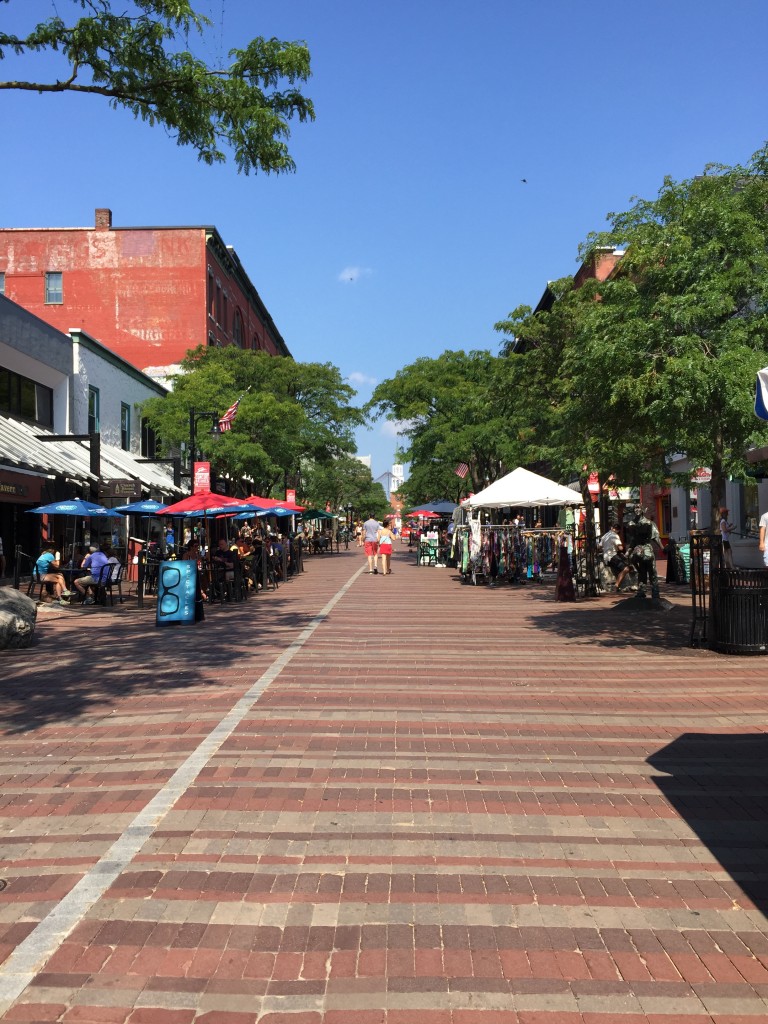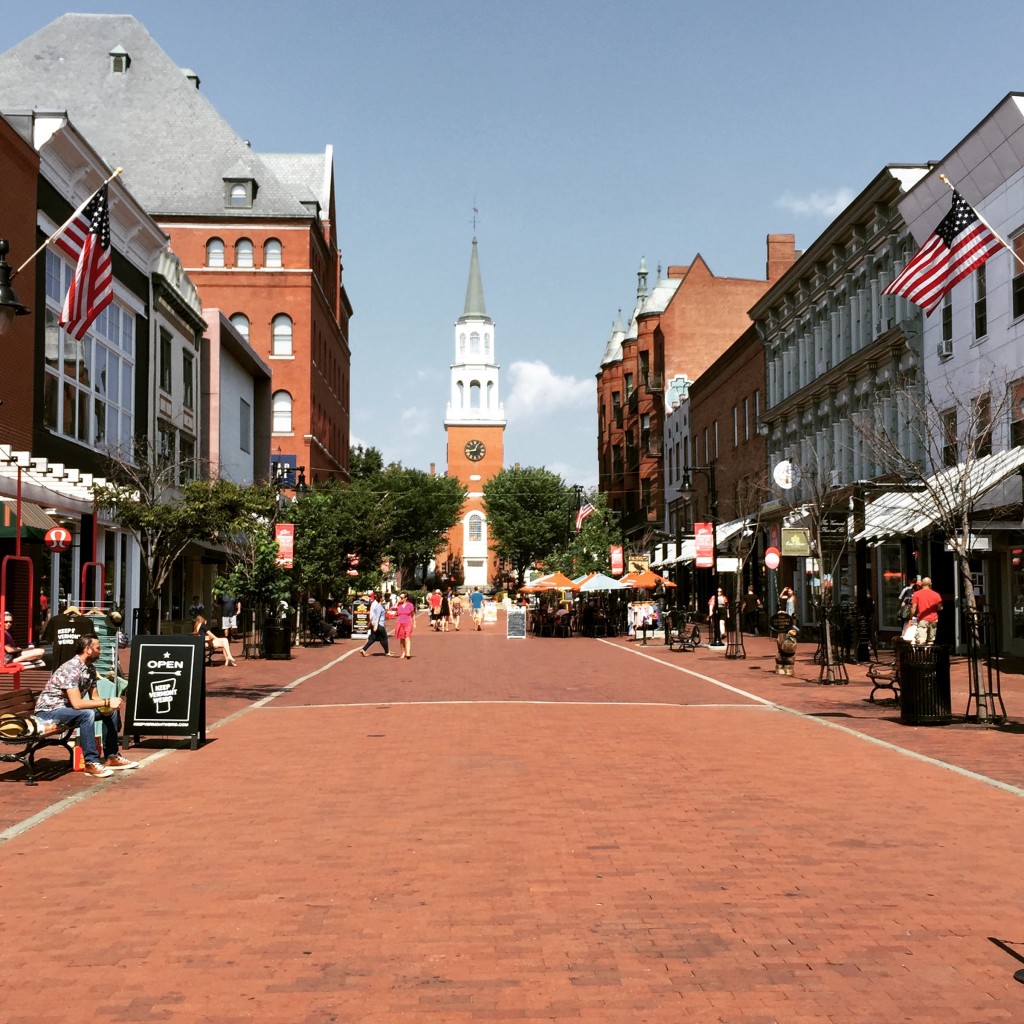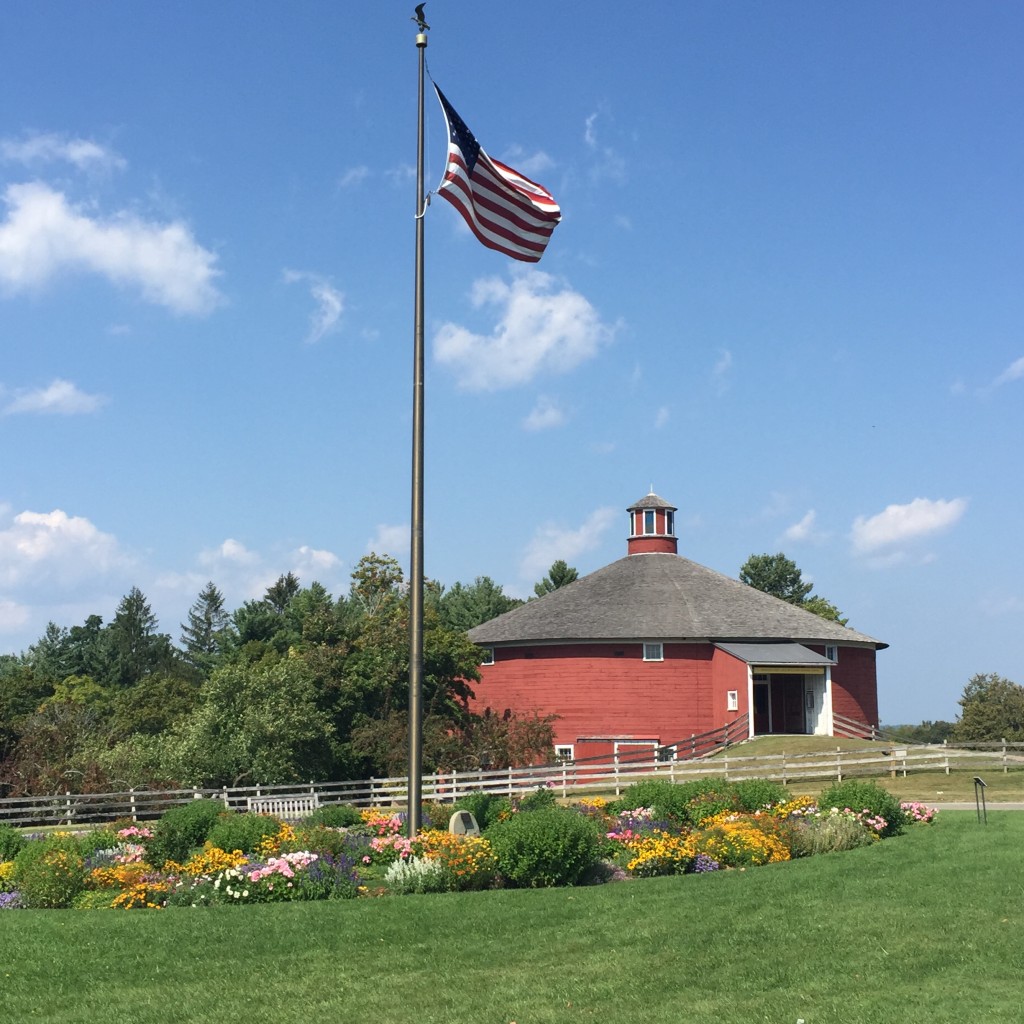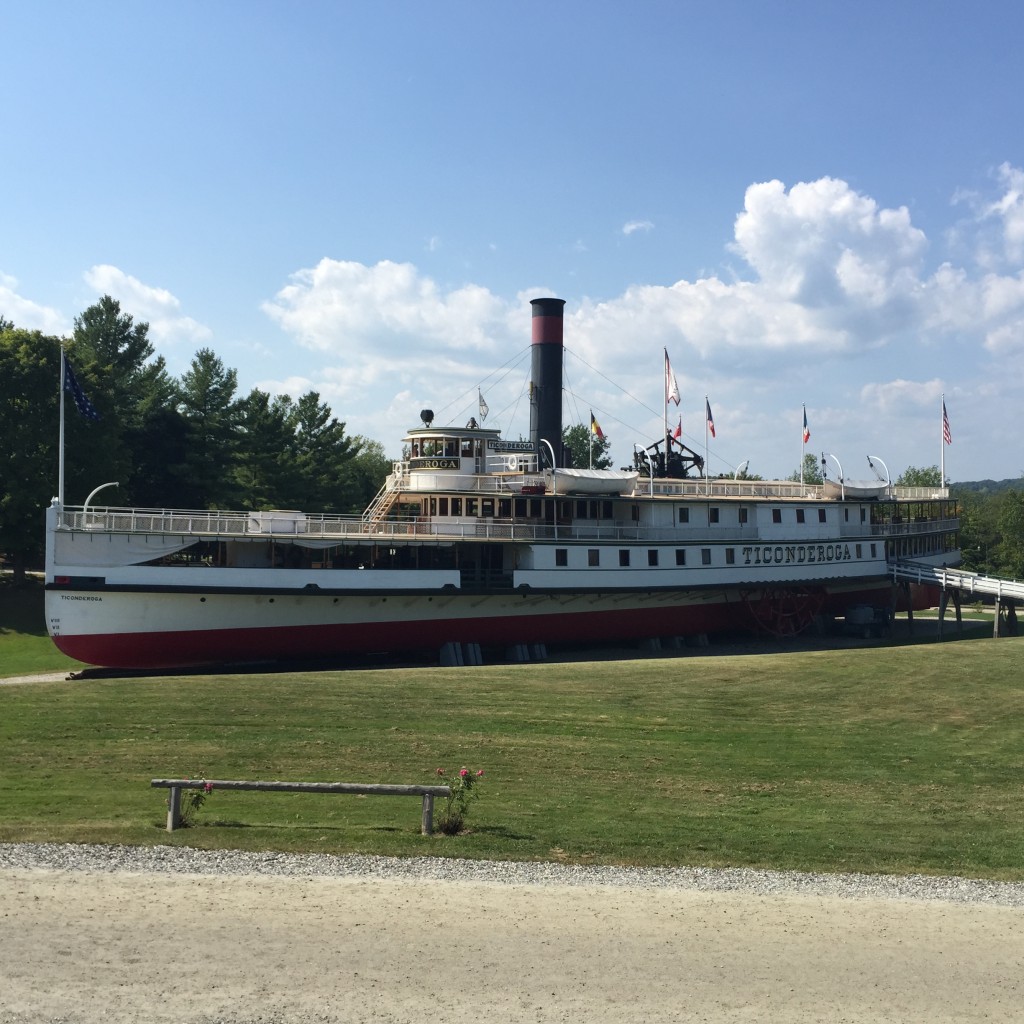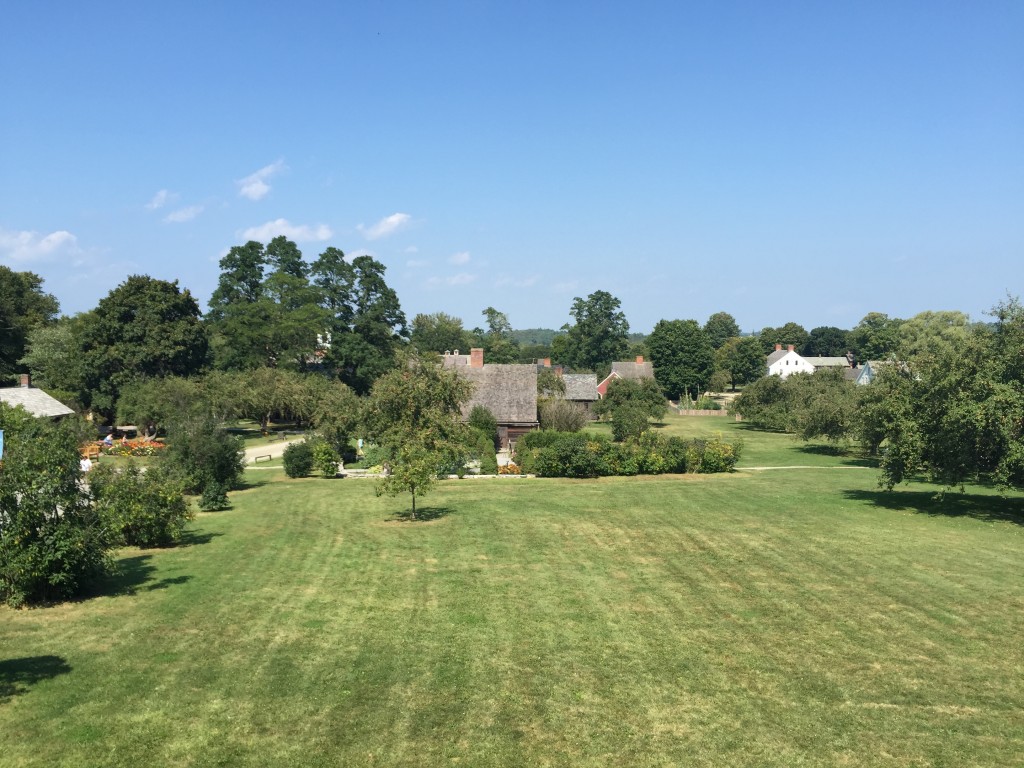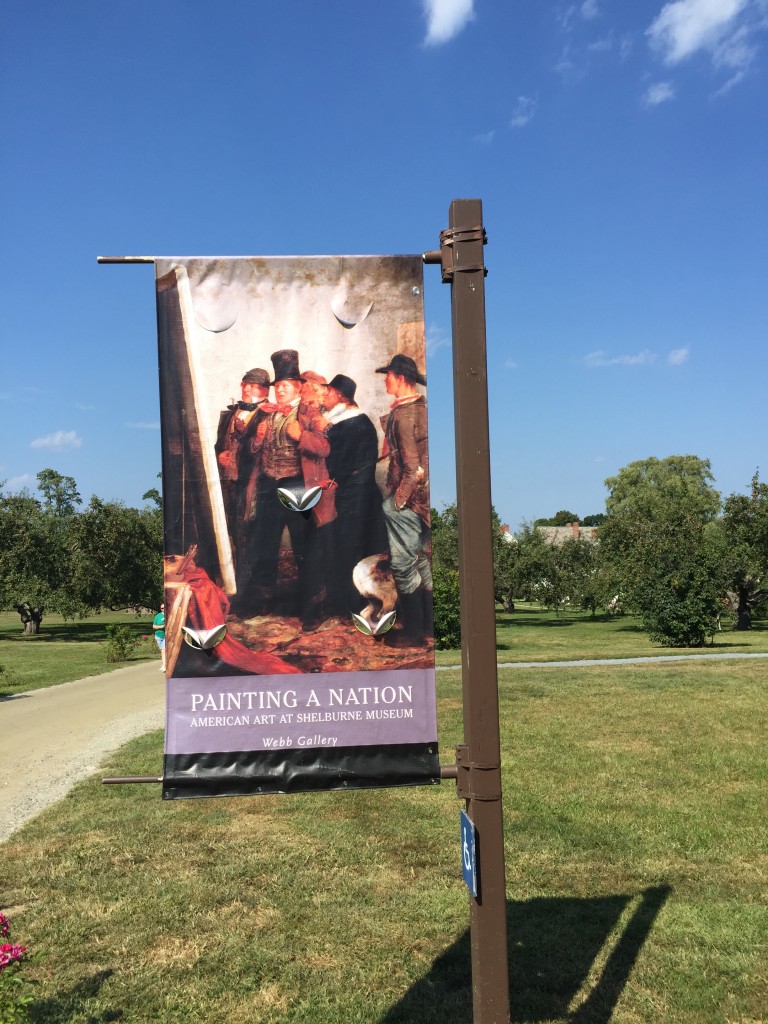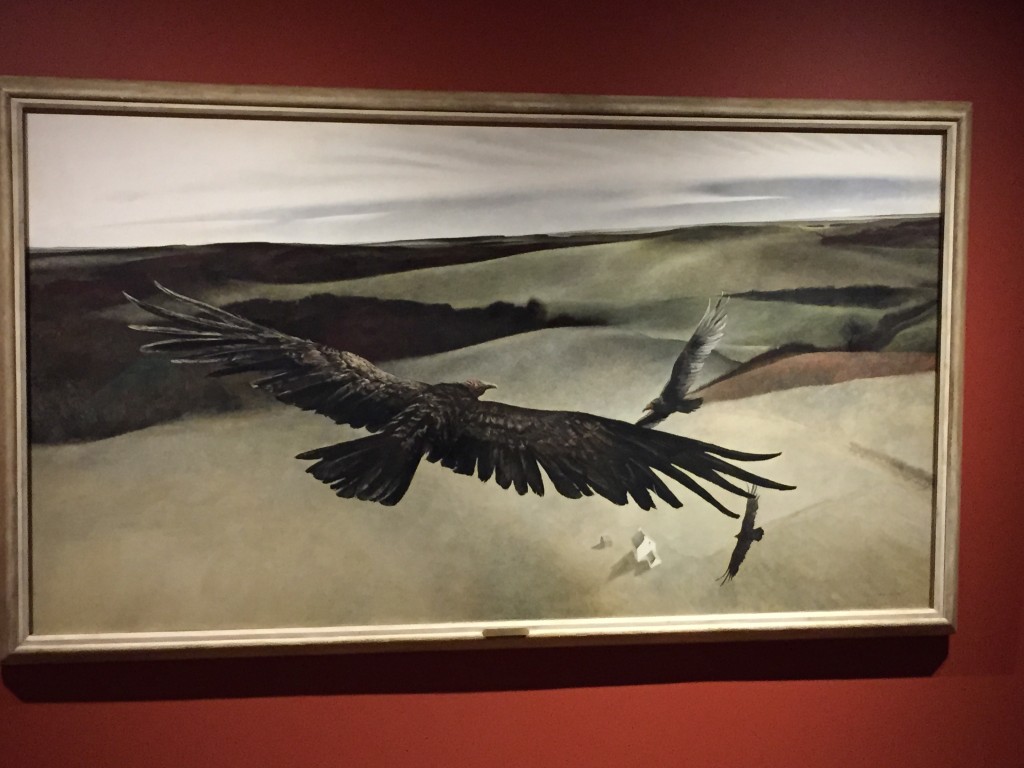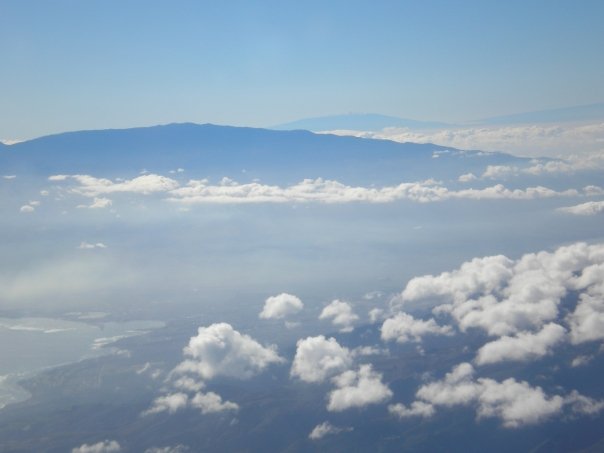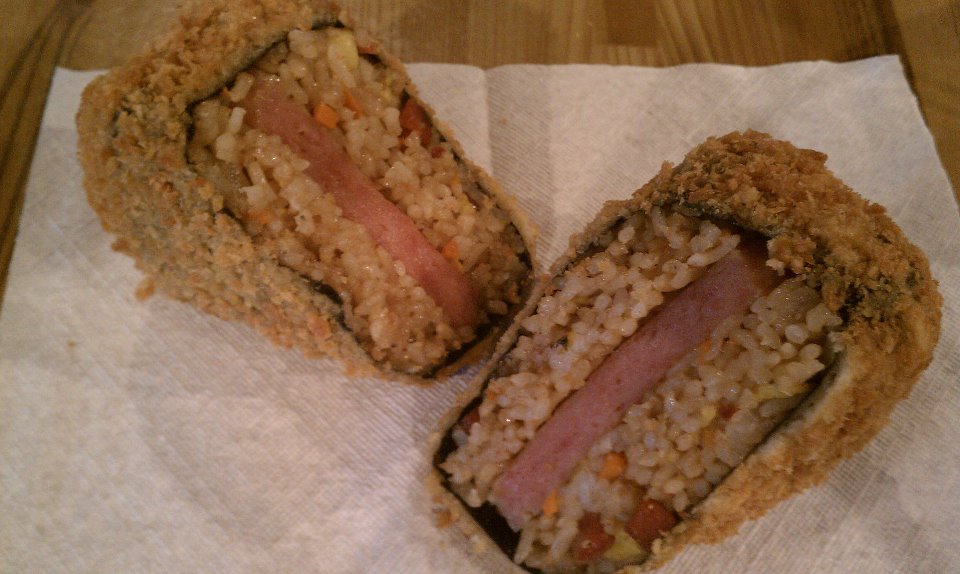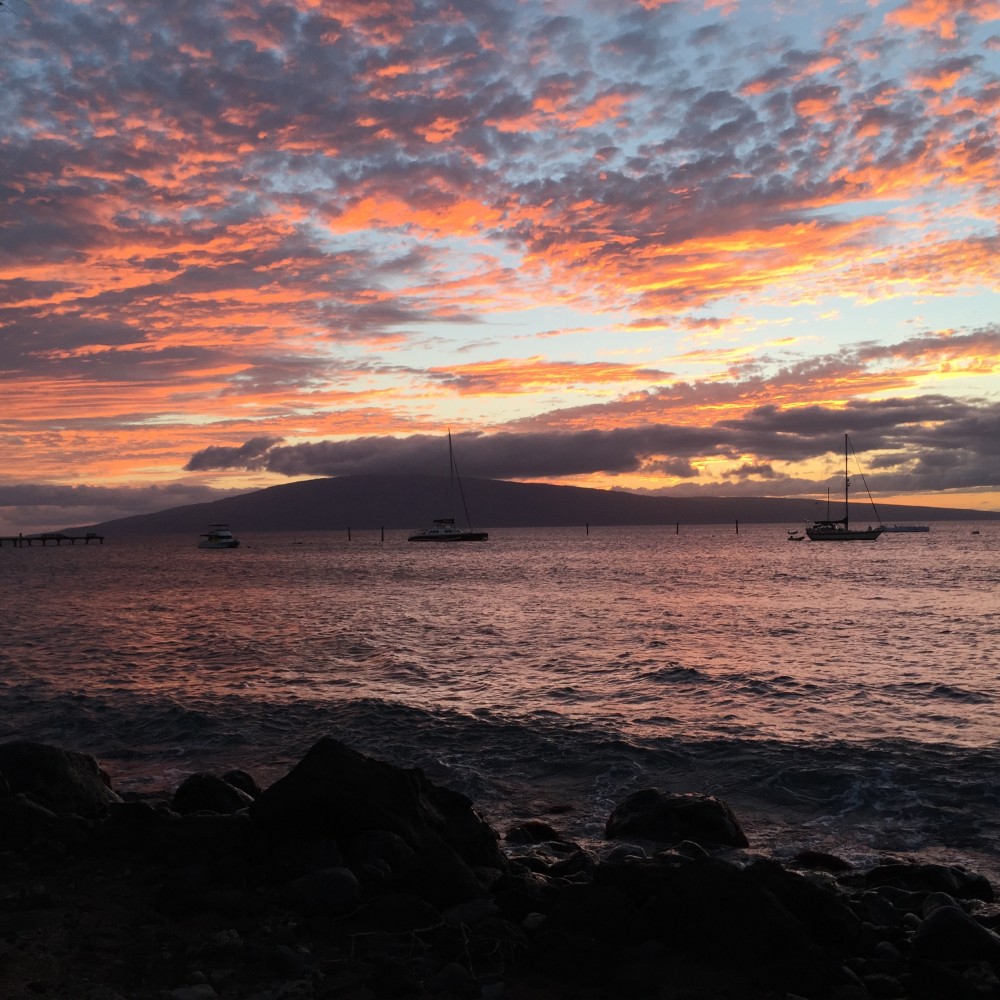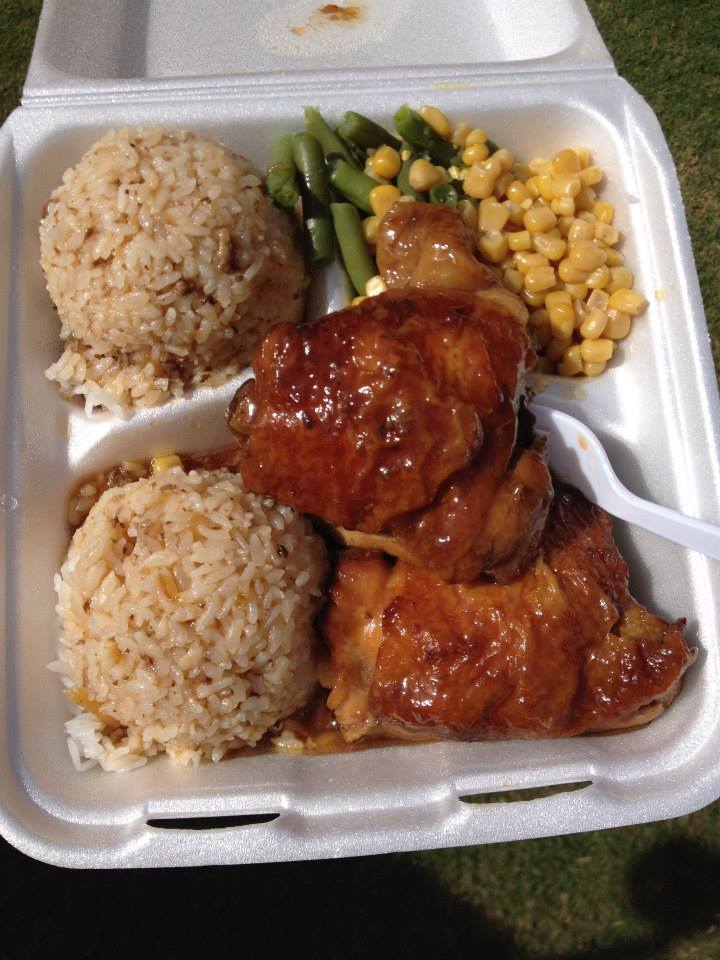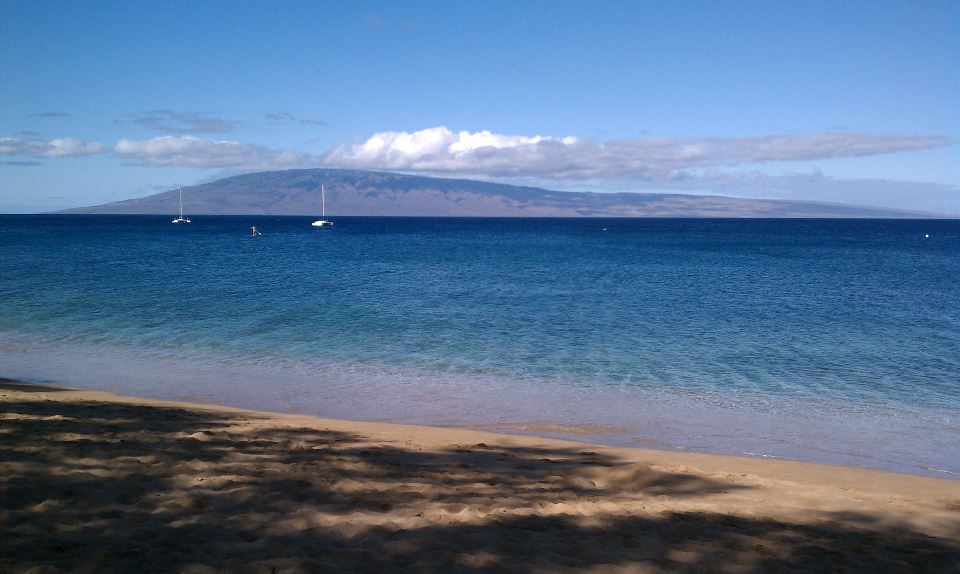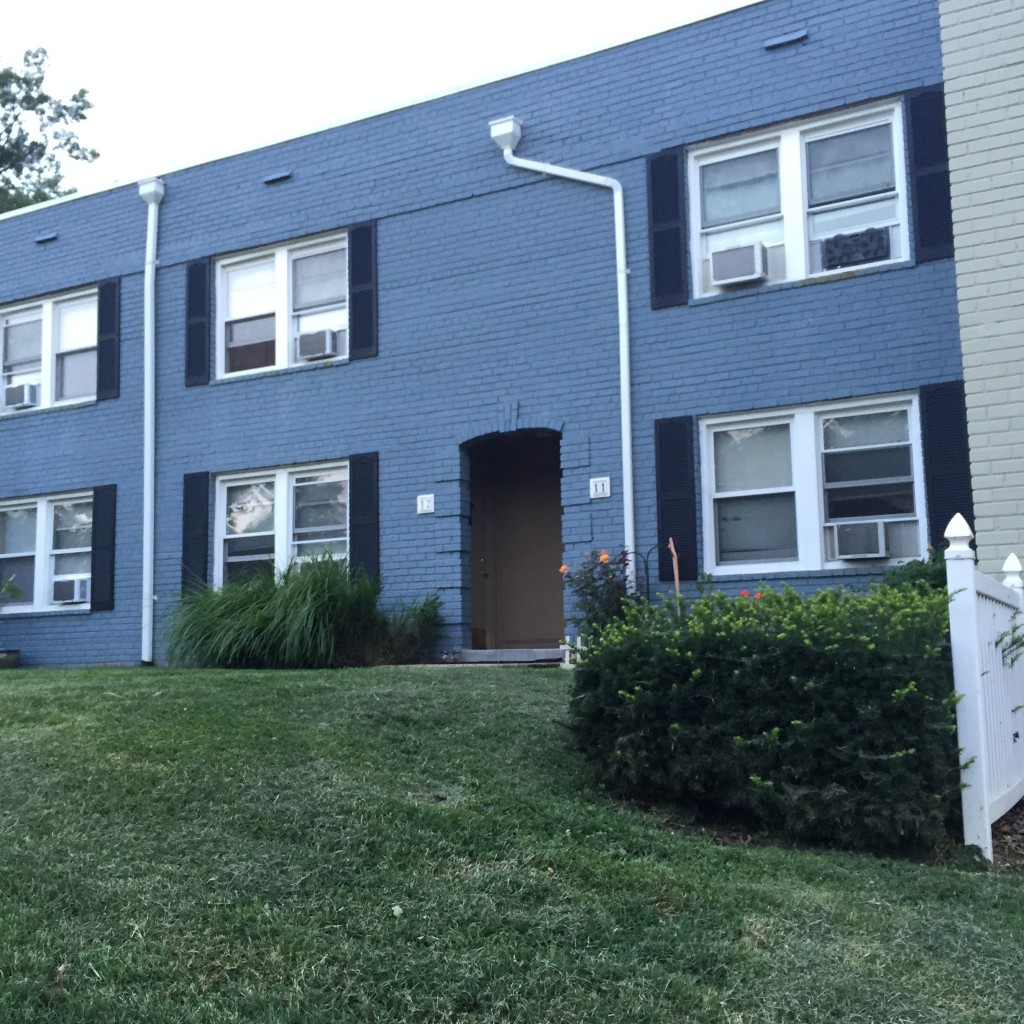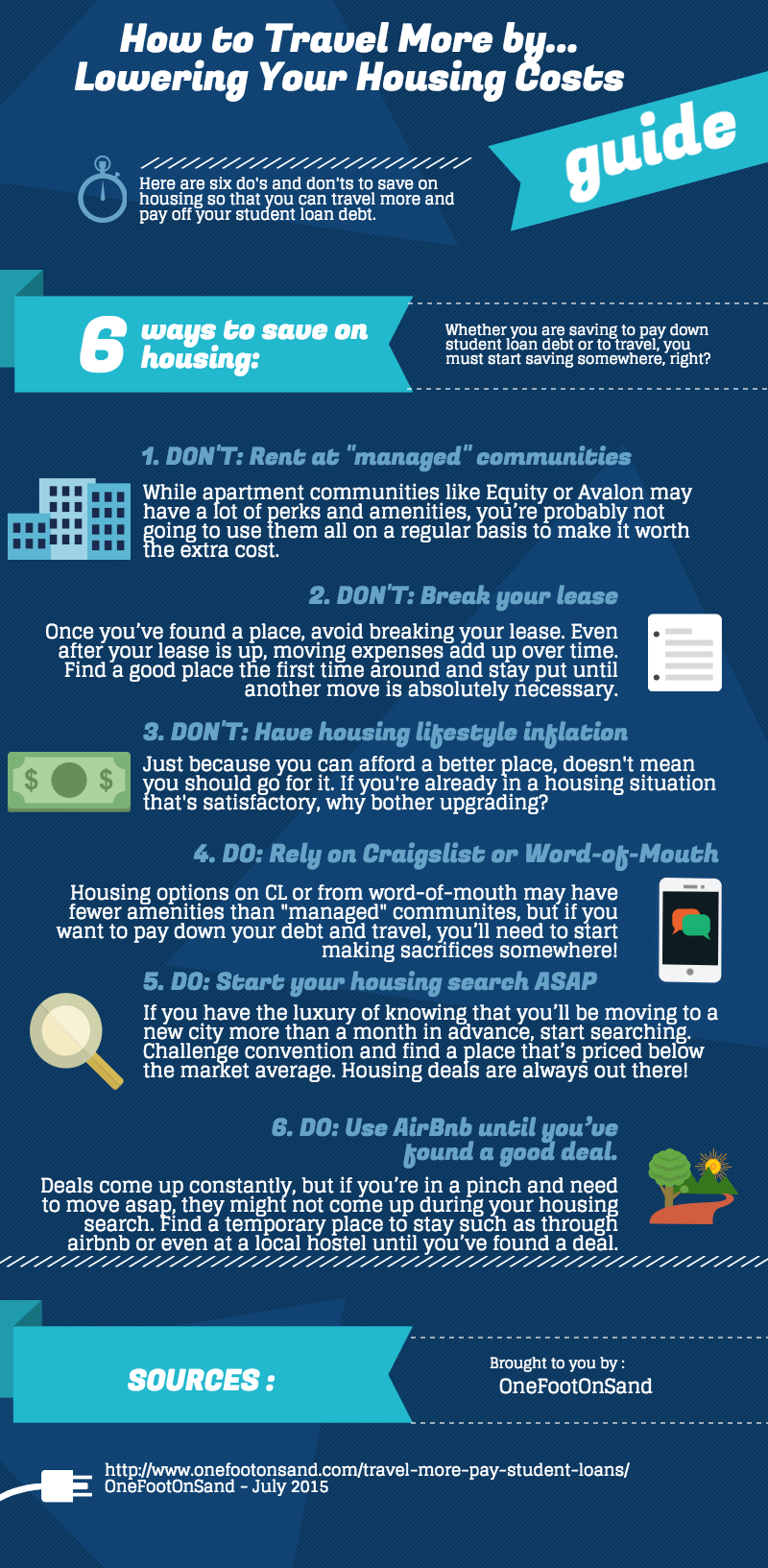I had a few hours to spend in Burlington on my way back from a weekend in Quebec before my flight back down to DC, and for a city of less than 50,000 people, Burlington had a lot of activities to choose from. Here are my top three picks on what to do if you’ve got a day in Burlington.
#1 Take a cruise along Lake Champlain.
I love being out on the water, and the first thing I did when I got to Burlington was hop on a tour of the lake with The Spirit of Ethan Allen. The ticket cost about $22.50 for about an hour and a half cruise around the lake. The guided tour was really well done, with the tour guide explaining in great detail the history of the lake and surrounding area. For one thing, I learned that the lake is a little over 100 miles long and 12 miles wide at it’s largest point, and is often called the “West Coast of New England.” Here are some pictures from what I saw:
Waiting for the ferry at the Burlington Pier.
Sailboats with the Adirondack Mountains and New York State in the distance.
(Nerd alert) Check out the clear layers of rock on the cliffside!
Water as far as the eye can see!
View of Burlington from the lake.
Pro-tip: There are signs that say no outside food or drinks are allowed on the boat, but fear not, you don’t have to force yourself to drink all that water you just bought. Before boarding the ferry there’s a cooler where you can drop your stuff off and pick up on your way after the cruise ends.
#2 Walk along Church Street.
After stopping at a local restaurant along the lake, I walked north towards downtown. Burlington itself is a pretty small city, and probably because of that fact, is very walkable. The main street with a ton of activity is Church Street, which from what I understand is generally pedestrian-only on weekends. Great place to people watch, check out boutiques and just relax!
There was a bike race tournament going on when I visited that went right through the city!
View of Church Street.
At the end of Church Street.
#3 Visit the Shelburne Museum.
I’m a big fan of art, specifically landscape art, and had read a lot via TripAdvisor about the Shelburne museum. Tickets to the museum cost $20. That might seem a bit pricey, but the tickets are good for two days. Moreover, this place is HUGE! They really shouldn’t call it a museum. A compound or estate seems more fitting. The museum is known for it’s collection of American Art, a heritage boat The Ticonderoga which once plied the waters of Lake Champlain, as well as early New England history.
The Entrance to the Shelburne Museum
The Ticonderoga
Everything at the museum can be explored. Here I am inside the boiler room in the Ticonderoga.
A view of the museum grounds. There are more than a dozen different buildings to explore.
My favorite part of the museum was the Webb Gallery, home to the Shelburne’s collection of American art.
One of the many paintings inside the gallery.
How to Get There?
Getting to Burlington is pretty easy. I flew into the city’s main airport, BTV, but you can also fly into Montreal, an hour and a half drive due north, or a 5.5 hour drive up on I-87 from New York City. The Vermonter also offers train service from New York City to Burlington.
Conclusion
Although I was in Burlington for a few hours, I could easily see myself spending at least 3 full days exploring Northern Vermont, especially during the Fall Season as the leaves start to change. I definitely hope to make it up there sometime soon.

